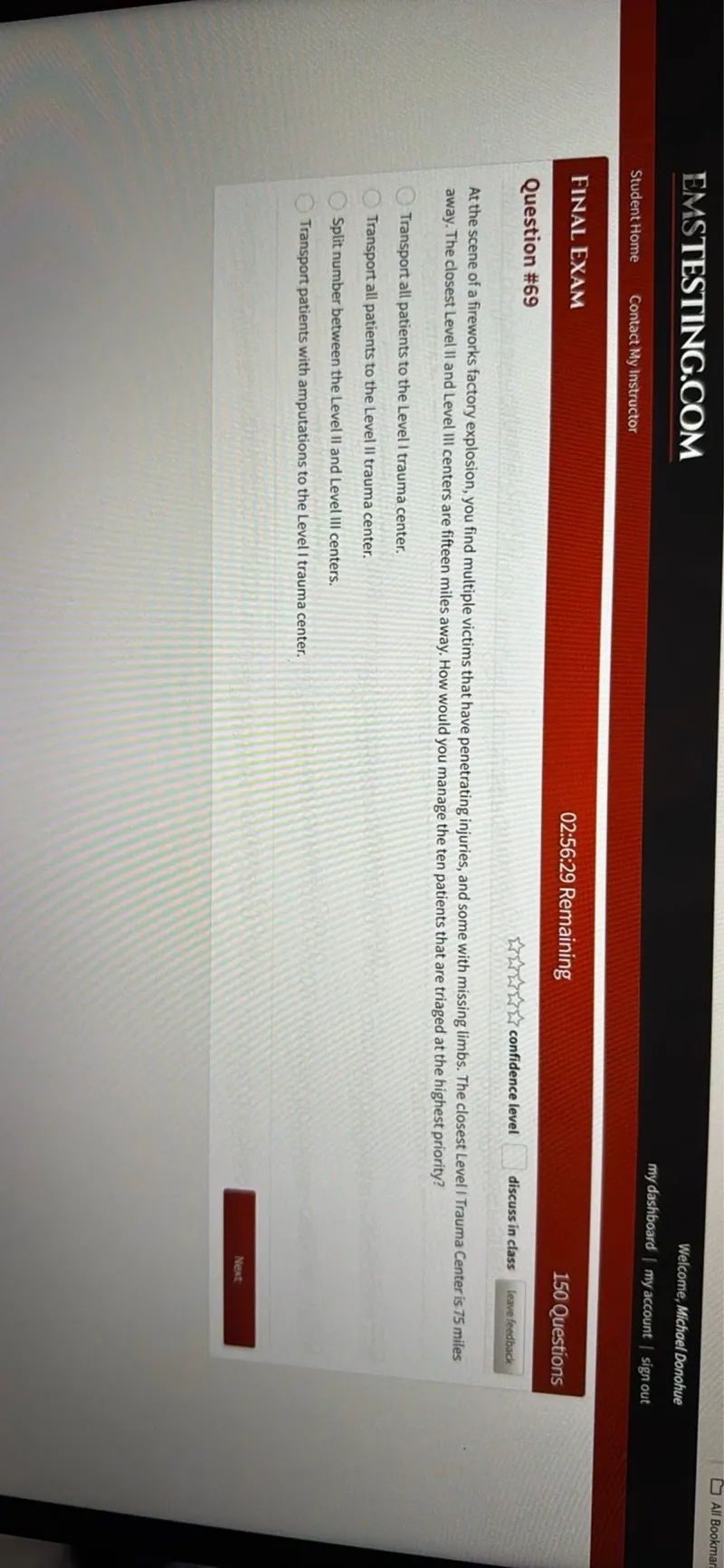Questions: At the scene of a fireworks factory explosion, you find multiple victims that have penetrating injuries, and some with missing limbs. The closest Level I Trauma Center is 75 miles away. The closest Level II and Level III centers are fifteen miles away. How would you manage the ten patients that are triaged at the highest priority? Transport all patients to the Level I trauma center. Transport all patients to the Level II trauma center. Split number between the Level II and Level III centers. Transport patients with amputations to the Level I trauma center.

Transcript text: At the scene of a fireworks factory explosion, you find multiple victims that have penetrating injuries, and some with missing limbs. The closest Level I Trauma Center is 75 miles away. The closest Level II and Level III centers are fifteen miles away. How would you manage the ten patients that are triaged at the highest priority?
Transport all patients to the Level I trauma center.
Transport all patients to the Level II trauma center.
Split number between the Level II and Level III centers.
Transport patients with amputations to the Level I trauma center.





